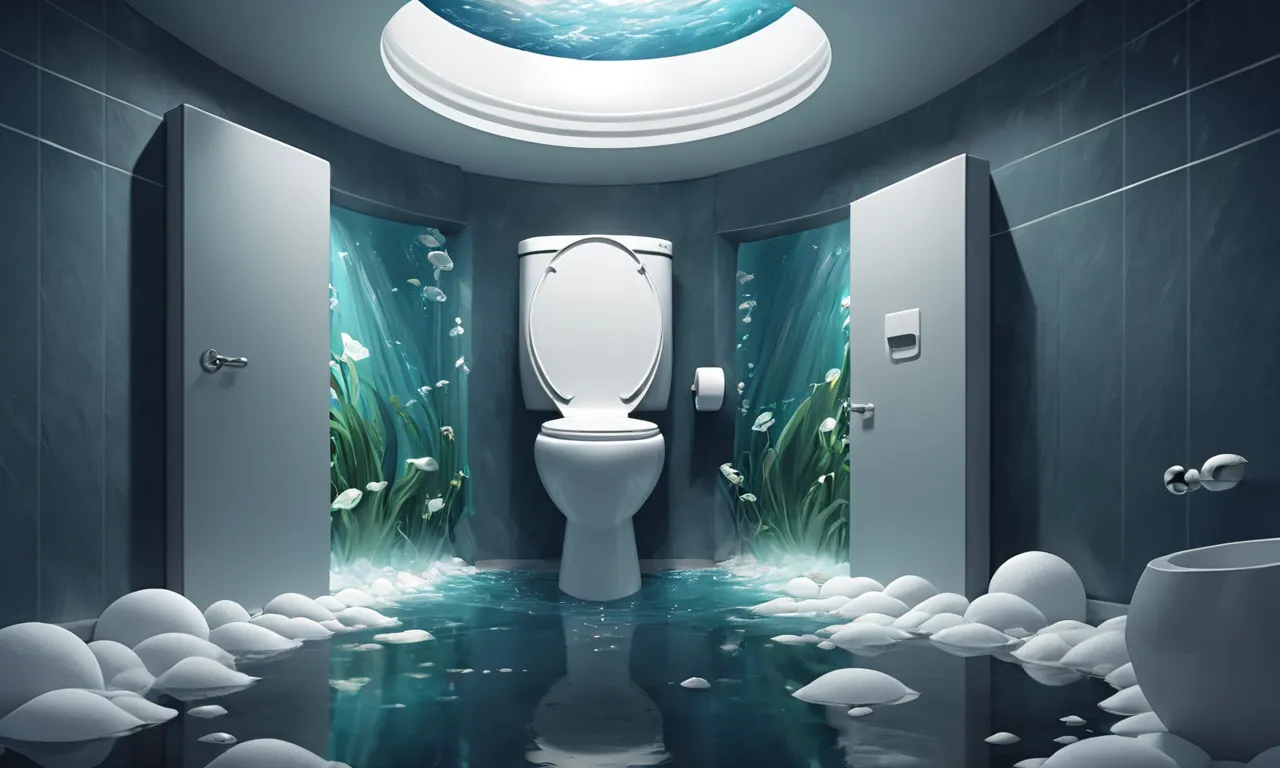Dream Of Overflowing Toilet

Have you ever experienced an overflowing toilet nightmare? It’s not just a bad dream; it can become a reality if you don’t understand the underlying causes and solutions to this pesky plumbing problem. In this comprehensive guide, we will explore the reasons behind an overflowing toilet and provide practical tips for preventing and fixing these issues.
Causes of Overflowing Toilets
- Clogged Drains: One of the most common culprits for an overflowing toilet is a clog in the drain pipe. This blockage prevents water from flowing down the drain and can result in a sudden rise of water levels within the bowl, ultimately leading to an overflow.
- Blocked Vent Pipes: Vent pipes are essential components of your plumbing system that allow airflow into your sewer line. When these pipes become blocked due to debris, leaves, or rodents, it can create a vacuum effect in your toilet’s drainage system, causing water to overflow.
- Malfunctioning Flapper: The flapper is responsible for sealing the opening between the toilet bowl and tank when you flush. If the flapper isn’t working correctly or gets damaged, it may not close properly, leading to water continuously flowing into the toilet bowl.
- Overflow Tube Issue: Most modern toilets have an overflow tube that helps prevent overflowing during heavy usage. However, if this tube becomes blocked or damaged, it can cause water to spill over the rim of the bowl.
- High Water Pressure: Excessive water pressure can strain your toilet’s components, potentially causing leaks or cracks in the tank or bowl. These issues may result in water overflowing from your toilet.
Preventive Measures for an Overflowing Toilet
- Regularly Inspect Your Plumbing: Periodically check your plumbing system for signs of damage, clogs, or blockages to prevent potential problems before they occur.
- Use a Plunger: A plunger is a handy tool that can help clear minor clogs in your toilet drain. Make sure to use the right technique and apply steady pressure to unblock the pipe effectively.
- Install a Toilet Auger: If you frequently experience clogged drains, investing in a toilet auger can help tackle more stubborn blockages without causing further damage to your plumbing system.
- Monitor Your Water Pressure: Keep an eye on your water pressure levels and consult with a professional if you suspect that high pressure might be affecting your toilets or other fixtures in your home.
- Routine Maintenance of Flapper and Tank Components: Replace worn-out flappers, check for leaks around the tank’s base, and ensure all parts are functioning correctly to prevent unnecessary water flow into your toilet bowl.
How to Fix an Overflowing Toilet
- Turn Off the Water Supply: Locate the shut-off valve behind your toilet and turn it clockwise to stop water from entering the tank. This step is crucial to prevent further damage while addressing the issue.
- Clear Away Excess Water: Use a bucket or cup to remove as much standing water from the bowl as possible without flushing the toilet. Avoid using a plunger until you have removed most of the water to minimize splashing.
- Address the Clog: Depending on the cause, try using a plunger, auger, or chemical drain cleaner to clear the blockage in your toilet drain. Be cautious when using chemicals, as they may damage your pipes over time.
- Check and Replace Flapper if Necessary: Inspect the flapper for wear or damage and replace it if needed. Ensure that the chain connecting the handle to the flapper is not too short or too long, so the flapper seals properly after flushing.
- Test Your Toilet: Once you have addressed the issue causing the overflow, flush your toilet multiple times to ensure that everything is working correctly and there are no residual leaks or blockages.
In conclusion, an overflowing toilet can be a frustrating and messy problem to deal with. By understanding the various causes of this plumbing issue, practicing preventive measures, and knowing how to fix an overflowing toilet, you’ll be better equipped to handle these situations when they arise. Remember that prevention is always better than cure, so don’t forget to conduct regular checks on your plumbing system to keep everything running smoothly.






